The Siberian Husky is one heck of a dog with a fascinating history. Originally bred by the Chukchi people of eastern Siberia, they were brought to Alaska in 1908 to serve as working sled dogs. Undeniably, these energetic and powerful pups were quickly recognized for their incredible endurance and stamina and soon became the go-to breed for sled dog racing.
Recent DNA studies show that the Siberian Husky, the Alaskan Malamute, and the Alaskan Husky are all closely related and can be traced back to their Chukotka sled dog ancestors in Siberia. Interestingly, they are genetically separate from the Canadian Eskimo and Greenland Dogs in the Inuit dog group.
These furry friends have also been around for a long time, with a lineage stretching back over 9,500 years. Due to admixture, they have also been found to share significant genetic similarities with the now-extinct Taimyr wolf of North Asia. This likely helped them adapt to the harsh arctic environment in which they were bred.
So, whether you’re a fan of dog racing or love the outdoors, the Siberian Husky is a breed worth considering. Obviously, with their rich history and impressive genetic makeup, they are truly one of a kind.
Evolution and Origins of Huskies
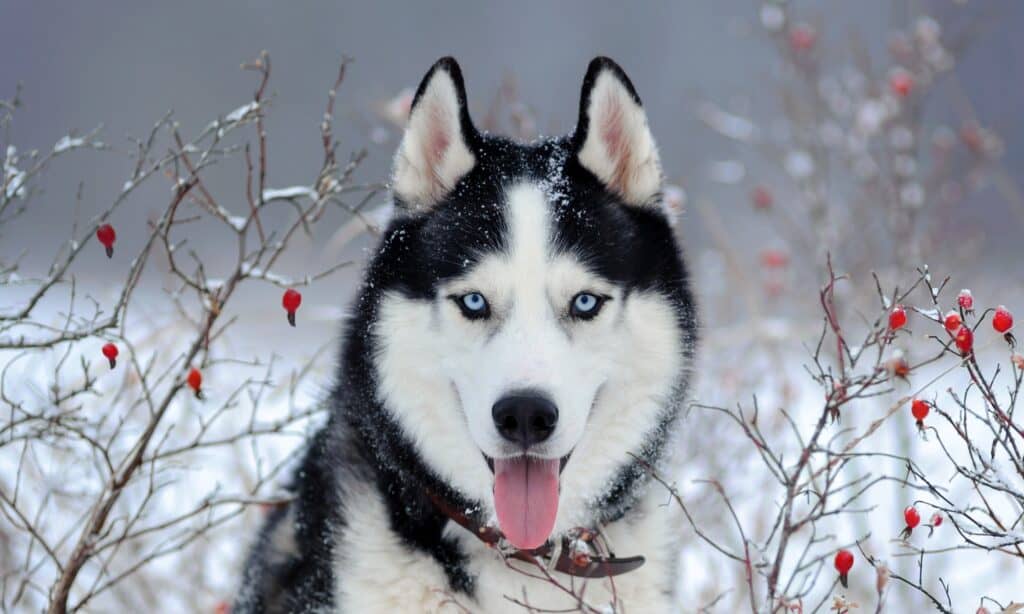
The Siberian Husky features an ancient lineage that dates back to 4,000 years.
©iStock.com/format35
First, the Siberian Husky is not a wolf or a wolf mix but has an ancient lineage dating back 4,000 years.
Originally, the Husky was a companion and working dog for the Chukchi tribe in northern Siberia. They slept in the family dwelling.
The Husky was brought to Alaska in 1909 for All-Alaska Sweepstakes races. They finished third and soon became popular in sled-dog races.
In 1925, a team of Siberian Huskies helped during a diphtheria epidemic in Nome, Alaska, and gained national attention. Leonhard Seppala even toured with his team in New England and won races.
Seppala and others helped get the breed recognized by the AKC in 1930, and the Siberian Husky Club of America was founded in 1938. They remain a beloved and versatile breed today.
Siberian Husky Introduction
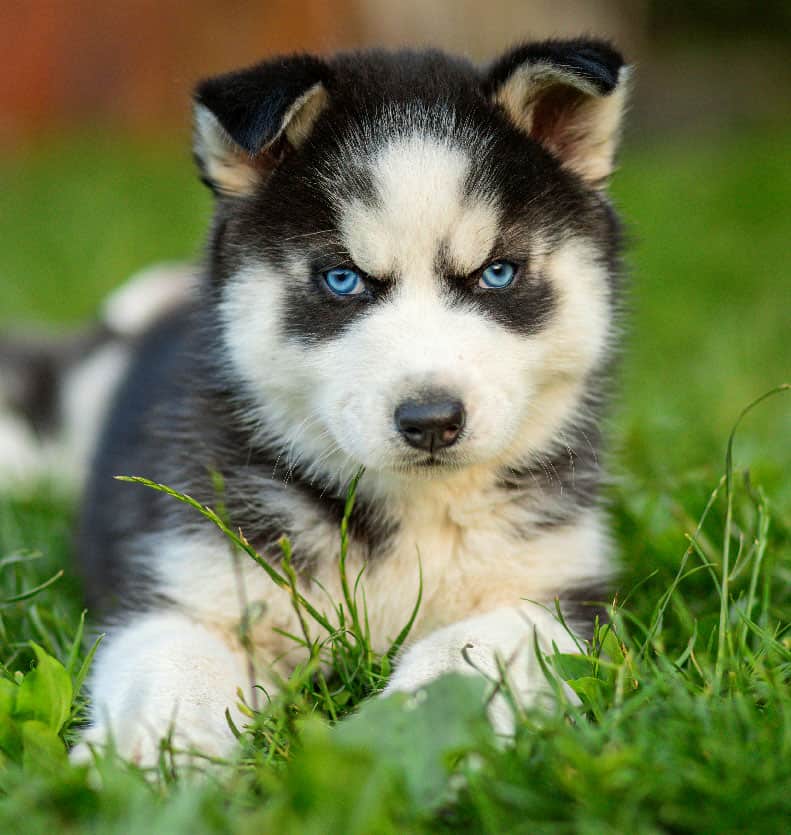
The Siberian Husky are adored by many.
©iStock.com/Andrii Zorii
The Siberian Husky is a compelling and adored medium-sized working sled dog breed. This type belongs to the Spitz genetic family and is distinguished by its distinct look. It has a double coat that’s heavily furred, has high triangular ears, and striking markings. The Siberian Husky is smaller than the similar-looking Alaskan Malamute.
The Chukchi people of Siberia intentionally raised these dogs, originating in Northeast Asia, for sled pulling and as faithful friends. They are a lively, active, and hardy breed well adapted to the extreme cold and severe circumstances of the Siberian Arctic. During the Nome Gold Rush, a Russian fur merchant called William Goosak imported these dogs to Nome, Alaska.
They were formerly sled dogs for mining operations and journeys over inaccessible terrain.
The Siberian Husky is becoming a popular home pet, beloved for its kind and loyal nature. Yet, they often appear as sled dogs in competitive and recreational mushing competitions. Their agility, endurance, and love of running make them great candidates for this exercise. As a result, they continue to succeed in this area.
Different Types of Huskies and Husky Mixes
Types of Huskies
- Siberian Husky
- Alaskan Husky
- Alaskan Malamute
- Canadian Eskimo Dog
- Sakhalin Husky
- Greenland Dog
- Chinook
Common Husky Mixes
- Husky-German Shepherd mix (Gerberian Shepsky)
- Husky-Labrador Retriever mix (Siberian Retriever)
- Husky-Pit Bull mix (Pitsky)
- Husky-Akita mix (Huskita)
- Husky-Collie mix (Siberian Collie)
- Husky-Golden Retriever mix (Goberian)
- Husky-Rottweiler mix (Rottsky)
- Husky-Australian Shepherd mix (Aussie Husky)
- Husky-Boxer mix (Boxsky)
- Husky-Chow Chow mix (Chusky)
Siberian Husky Fun Fact!
During World War II, the U.S. Army employed Siberian sled dogs in Arctic search and rescue missions to retrieve downed pilots and cargo.
As per K-9 History, search planes and sleds would collaborate to reach the site safely, with a recon plane locating the wreck and finding the best route for the dog sled teams and rescue workers. They would then transport them as close as possible to the site, where the dog sled teams would rescue the injured flyers and retrieve the cargo.
4 Pros and Cons of Owning Siberian Huskies
| Pros | Cons |
|---|---|
| Good Temperament: According to the American Kennel Club, Siberian Huskies are characterized by their friendly and gentle temperament, which makes them agreeable companions. These intelligent dogs are equipped with an easygoing disposition and are always eager to work. | High Exercise Needs: If you’re not looking for an active working dog for cold-weather outdoor activities like sledding, carting, or backpacking, I don’t recommend getting a Siberian Husky. This breed is not meant to be a mere house pet and has a natural drive to work that needs to be channeled. |
| Clean: Huskies have a natural inclination towards cleanliness, which makes them an excellent choice for those who want a dog that does not have a strong doggy odor. Huskies are known to be very fastidious in grooming themselves, similar to cats. This trait, combined with their lack of odor, makes them a highly desirable breed for many dog owners. | Escape Attempts: Siberian Huskies are known for their cunning ability to escape for adventure. To prevent such escape attempts, it is advisable to have a fence that’s at least 6 to 8 feet high and made of solid wood. Additionally, wire sunk into the ground along the fence line is necessary to prevent digging. |
| Appearance: The Siberian Husky’s physical appearance is captivating. Its thick coat, triangular ears, and bushy tail give it a wolf-like appearance, which many people find alluring. The breed’s glacial blue eyes also add charm, although some may have brown or bi-colored eyes. | Stubbornness: Siberian Huskies possess an independent nature and may not be inherently inclined to please their owners. Consistent and unwavering discipline is crucial in gaining their respect and obedience. |
| Playful: Huskies possess a playful and agile disposition along with incredible stamina. Their love for the outdoors makes them ideal companions for running, hiking, camping, and biking. They appreciate vigorous exercise, especially in cold weather, and are bred for sled pulling long distances. | Heavy Shedding: The Siberian Husky breed is known for shedding copious hair and fur. Daily brushing and vacuuming are necessary to manage shedding, and it is important to accept this aspect of the breed before bringing one into your home. |
The Best Food for a Siberian Husky
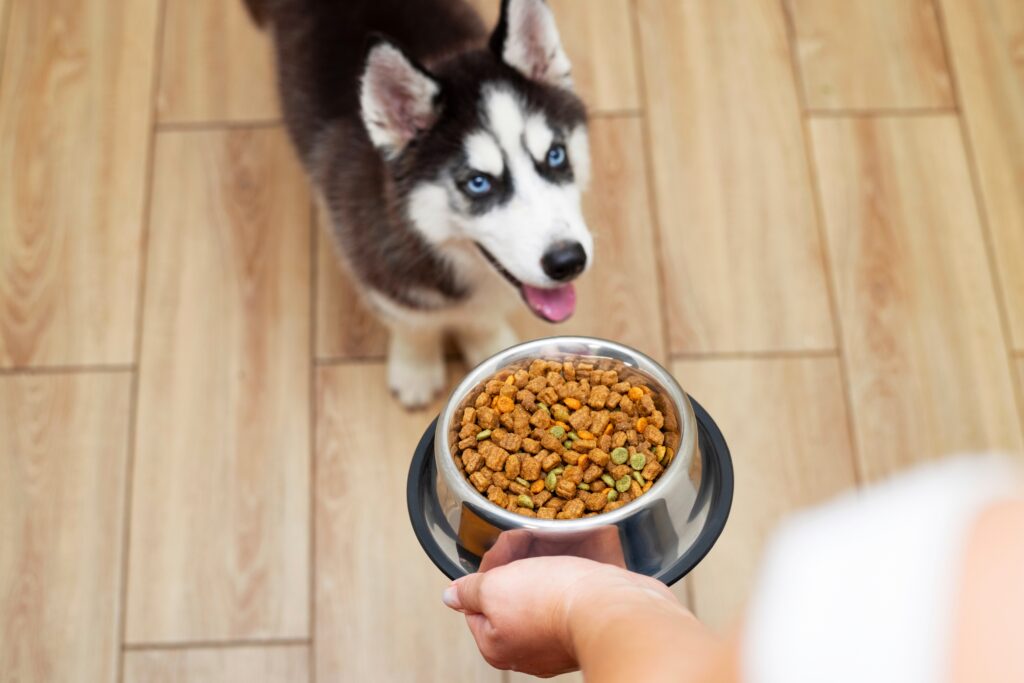
Huskies need well-balanced dog food.
©Andrii Spy_k/Shutterstock.com
Gentle Giants dry chicken recipe is complete and balanced dog food, making it perfect for huskies. Plus, it is suitable for all breeds at all stages of life. This dog food contains 22% crude protein and 9% crude fat. These percentages are both excellent and healthy.
The first ingredient in this dog food is chicken meal. It is a good source of protein. After that, pearled barley, brown rice, oatmeal, and peas are also included in the recipe.
Furthermore, several vegetables are added to the recipe as well. Together, they add vitamins, antioxidants, and minerals to dog food. These vegetables include carrots, sweet potatoes, pumpkin, cranberries, blueberries, and apples.
Husky Health Issues
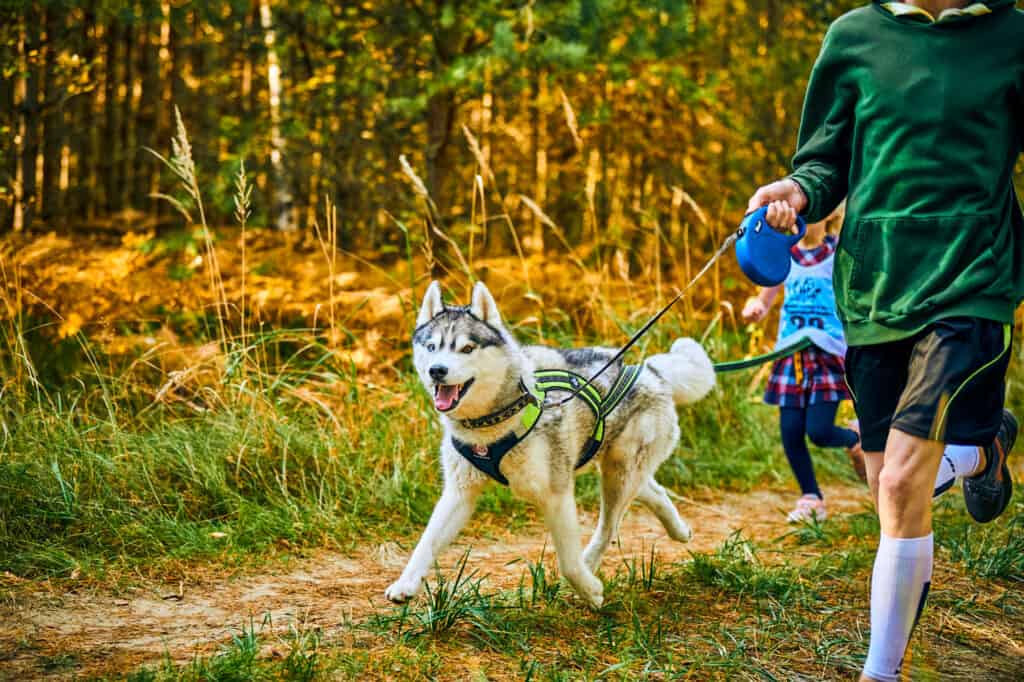
A Siberian Husky is a great pet, but be aware of potential health problems.
©iStock.com/TRAVELARIUM
Although the Siberian Husky breed has an average lifespan of 12 to 14 years and can make an ideal pet for many people, including families, prospective owners should consider that purebred Huskies have several canine health problems.
Cataracts
Cataracts are one of the most frequent health issues in Siberian Huskies, affecting roughly 10% of the breed. This disease, usually between 6 and 12 months in a Husky, can lead to blindness later in life. Therefore, a vet should regularly examine your dog’s eyes to detect cataracts early.
Progressive Retinal Atrophy
Progressive retinal atrophy (PRA), in which the retina of a dog’s eye begins to degrade, is another prevalent eye disease in Siberian Huskies. Canine blindness can be caused by cataracts and progressive retinal atrophy, both of which are costly health conditions. The importance of early identification in reducing the severity of these illnesses can’t be overstated.
Corneal Dystrophy
Siberian Huskies suffer from corneal dystrophy, a congenital illness that causes little white spots in their cornea. Huskies suffering from this condition may have opaque or foggy eyesight. There is currently no recognized therapy for corneal dystrophy.
Uveodermatologic Syndrome
Another prevalent eye condition that affects the skin and neurological system is uveodermatologic syndrome. Although the skin reaction to this disease is largely aesthetic, the consequences on the eyes might result in blindness in extreme cases. While difficult to notice, the initial signs are generally redness and poor vision in a Husky’s eyes.
Hip Dysplasia
Hip dysplasia, which is widespread in Siberian Huskies, is one of the most serious health concerns for any dog owner. This illness can cause serious abnormalities in the hip joint, is costly to cure, and is extremely uncomfortable for affected dogs. Hip dysplasia symptoms can help you spot problems early on and lessen their severity in the long term.
Follicular Dysplasia
Another prevalent health issue in Siberian Huskies is follicular dysplasia, which occurs between 3 and 4 months. This disorder can cause aberrant hair growth, hair loss in dogs, and uneven, infectious skin. There is no cure for follicular dysplasia, although some veterinarians will offer special shampoos, antimicrobials, and topical therapies to help control the illness.
Zinc Deficiency
Just like humans, dogs need sufficient zinc in their bodies to remain at optimum health. A zinc deficiency may cause hair loss on Huskies’ feet, elbows, or eye, chin, and lip areas. To alleviate symptoms, zinc supplements may help, but it’s important to consult a vet before adding any to your pet’s diet to avoid an overdose.
Hypothyroidism
Hypothyroidism is a prevalent health issue in Huskies caused by abnormal thyroid gland output. Weight gain, hair loss, bald areas on the coat, lethargy, and increased sleep are all symptoms of this illness.
Siberian Husky Temperament
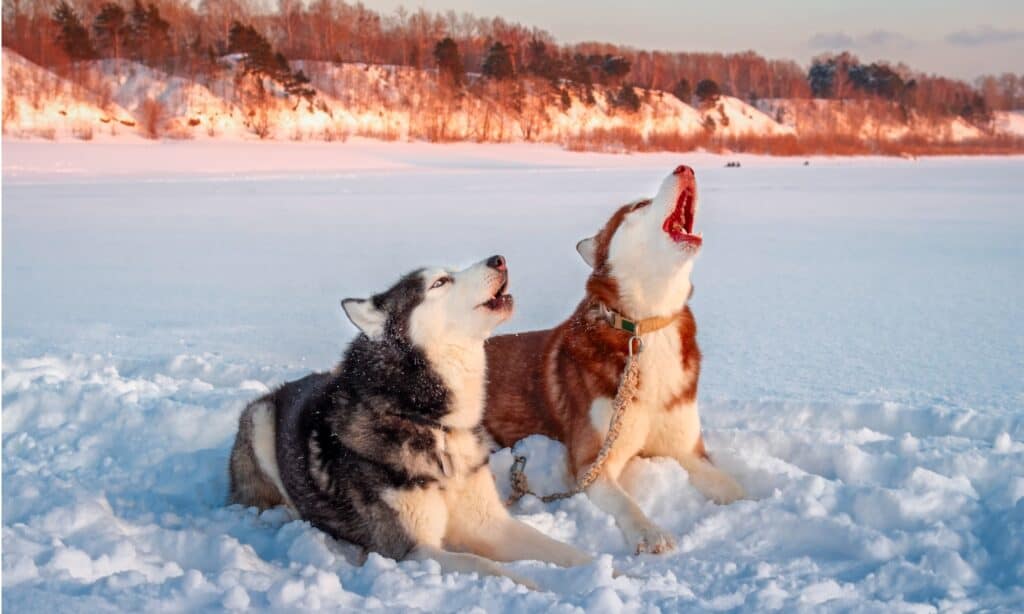
Siberian Huskies are friendly and social dogs.
©iStock.com/Автор
Siberian Huskies are a breed of dogs commonly associated with northern regions. They have a reputation for being intelligent but also independent and stubborn. Although they enjoy human companionship, they require gentle, firm training from an early age. Since bred for running, their love for running may occasionally precede their love for their owners. In general, Siberian huskies are friendly towards people, including children.
Most Siberian huskies are social with other dogs, especially ones they grew up with. However, due to their high prey drive, they might chase after cats and other livestock. During warm weather, Siberian huskies might dig to create cooler areas for themselves. While they don’t bark much, they do howl.
How To Take Care of a Siberian Husky

Remember what Siberian Huskies were bred for; know they require a lot of training.
©iStock.com/ortlemma
Siberian Huskies can be adorable dogs. However, they aren’t for the faint of heart. They require a lot of care and time to be happy and healthy.
Training
Although highly intelligent, they are also independent thinkers, so consistent, positive training throughout their lives is crucial. To handle their boundary-testing tendencies, a firm but fair approach is necessary. Yelling or punishing your dog can damage your relationship and hinder its training progress. If you are a new owner or lack experience with this breed, seeking guidance from an accredited trainer could be beneficial.
Since Huskies are social animals, they thrive on human company. With proper socialization from an early age, they should be confident dogs that enjoy meeting new people and dogs. However, this also means that they do not make good guard dogs, like rottweilers.
Huskies do not do well when left alone and ideally need a home where someone is always present to keep them company. The breed is prone to separation anxiety, so even short periods of alone time may be difficult for them.
Exercise
If you’re considering getting a Husky, it’s important to know that they are incredibly active dogs requiring plenty of exercise. In fact, they have heaps of energy and are the ideal pet for adventure-loving owners who enjoy the great outdoors. However, to provide them with the exercise they need, you’ll need plenty of space and a secure garden for them to play in, with ample room to run.
To meet your Husky’s exercise needs, it’s recommended that they get a minimum of two hours of activity every day. This should be spread across the day, and it’s important to vary your walking routes to ward off boredom. Additionally, your Husky will benefit from off-lead exercise in a secure area, lots of playtimes with you, and free time in the garden, alongside regular training sessions.
It’s important to be cautious during the summer, as Huskies have thick coats that can easily cause them to overheat. It’s crucial to watch them for signs of heatstroke and avoid exercising them during the hottest parts of the day. Instead, early mornings and evenings are likely the best times for long walks and runs.
Grooming
Huskies shed a lot! Bred for cold and snowy environments, they have a thick double coat that keeps them warm but also causes them to shed more than other dogs. This shedding is especially noticeable in spring and autumn, and you’ll need to brush your Husky a few times a week to keep their coat in good condition.
If you’re planning to give your Siberian Husky a bath, you may want to consider taking them to a professional groomer. Their large size and abundant fur can make it challenging to give them a bath at home.
Siberian Huskies and Kids

If well-socialized, your Husky will enjoy the company of children.
©Sbolotova/Shutterstock.com
Provided that your Husky is well socialized, they will take pleasure in the company of children (mainly because they love company!). However, we would not recommend getting a Husky if you have smaller children due to their size and strength since they could accidentally knock them over. Instead, they are better suited for households with teenagers or adults.
Supervising your Husky when they are around children and vulnerable adults is important to prevent any accidents. Even though they enjoy being around people, they can sometimes become too enthusiastic and boisterous, which can be unexpected for individuals unfamiliar with the breed.
Dogs Similar to the Siberian Husky

Samoyeds are similar to Huskies and were also bred for sledding.
©Ilya Barmin/Shutterstock.com
Several breeds are similar to the Siberian Husky, many of which people often mistake are commonly mistaken for this popular breed. The Alaskan Malamute is slightly larger than a Siberian Husky and looks extremely similar. Many of its temperament traits are the same, too. Simply put, it’s a husky in a bigger body.
The Samoyed is another similar breed. This one has a thick, fluffy coat and a rather playful personality. They’re smaller than Siberian Huskies, as well. They were originally bred for sledding, as well.
Canadian Eskimo dogs are larger and more powerful than Siberian Huskies. They’re a rare breed originally used for similar purposes as the husky.
The Greenland Dog is another rare breed similar to the Siberian Husky. This breed looks and acts like a husky. However, they’re larger and more muscular. They survive very harsh conditions and are known for their strength.
The Finnish Spitz is not a sled dog like the Siberian Husky. However, they are a spitz-breed that shares many characteristics with the husky. They have thick, reddish-gold coats and are extremely loyal.
Did you enjoy learning what Huskies were bred for? Learn the breeding history of the pit bull, Great Dane, and Chihuahua as well.
The photo featured at the top of this post is © iStock.com/TRAVELARIUM
Ready to discover the top 10 cutest dog breeds in the entire world?
How about the fastest dogs, the largest dogs and those that are -- quite frankly -- just the kindest dogs on the planet? Each day, AZ Animals sends out lists just like this to our thousands of email subscribers. And the best part? It's FREE. Join today by entering your email below.
Thank you for reading! Have some feedback for us? Contact the AZ Animals editorial team.






